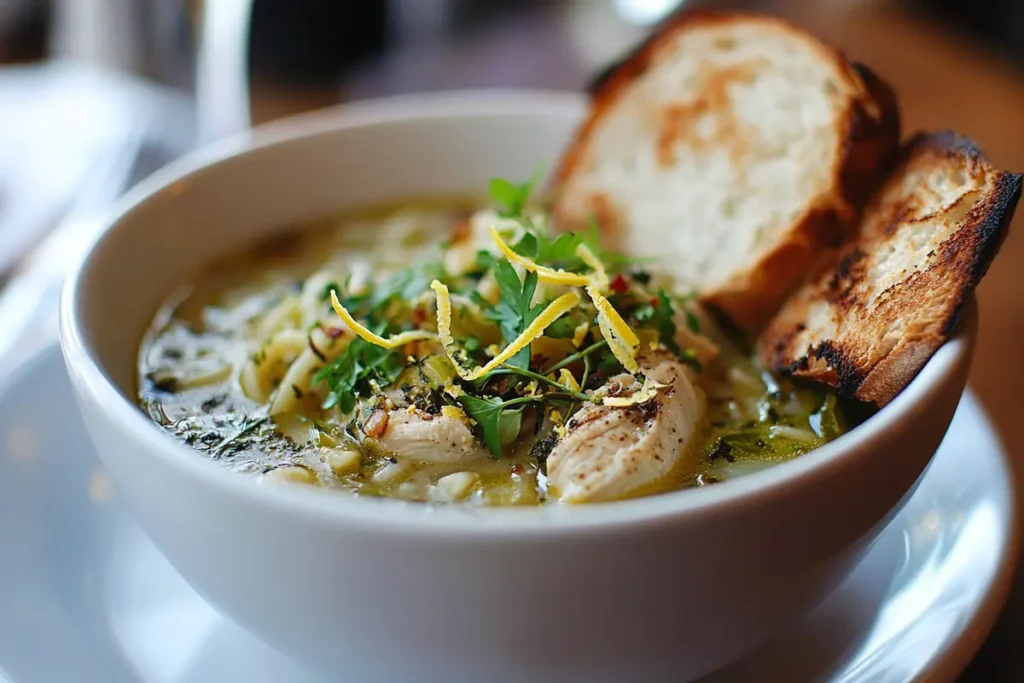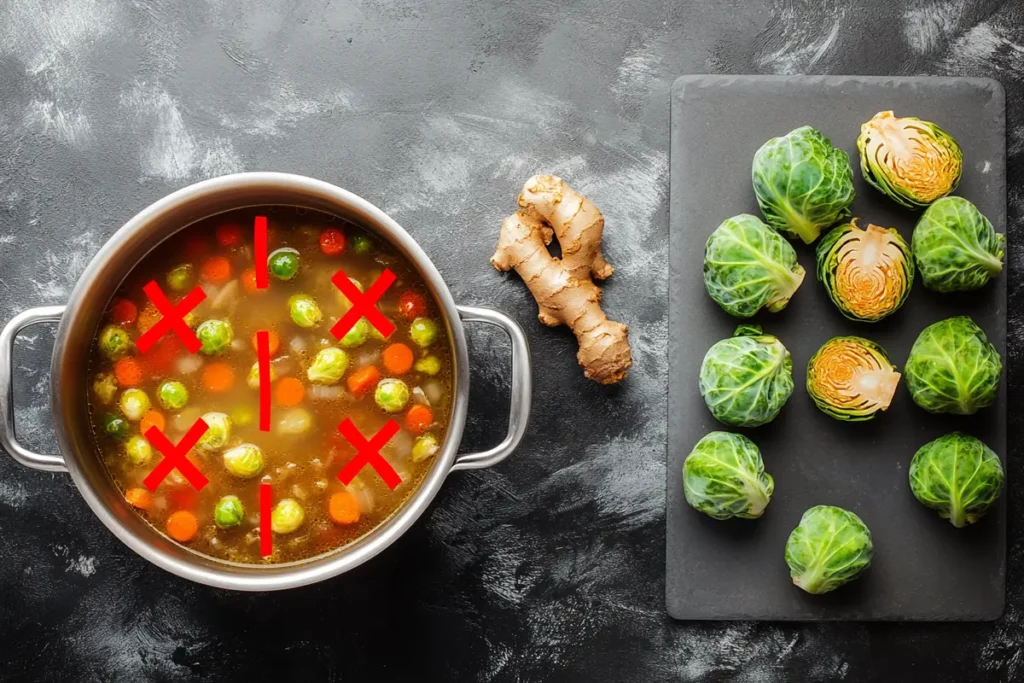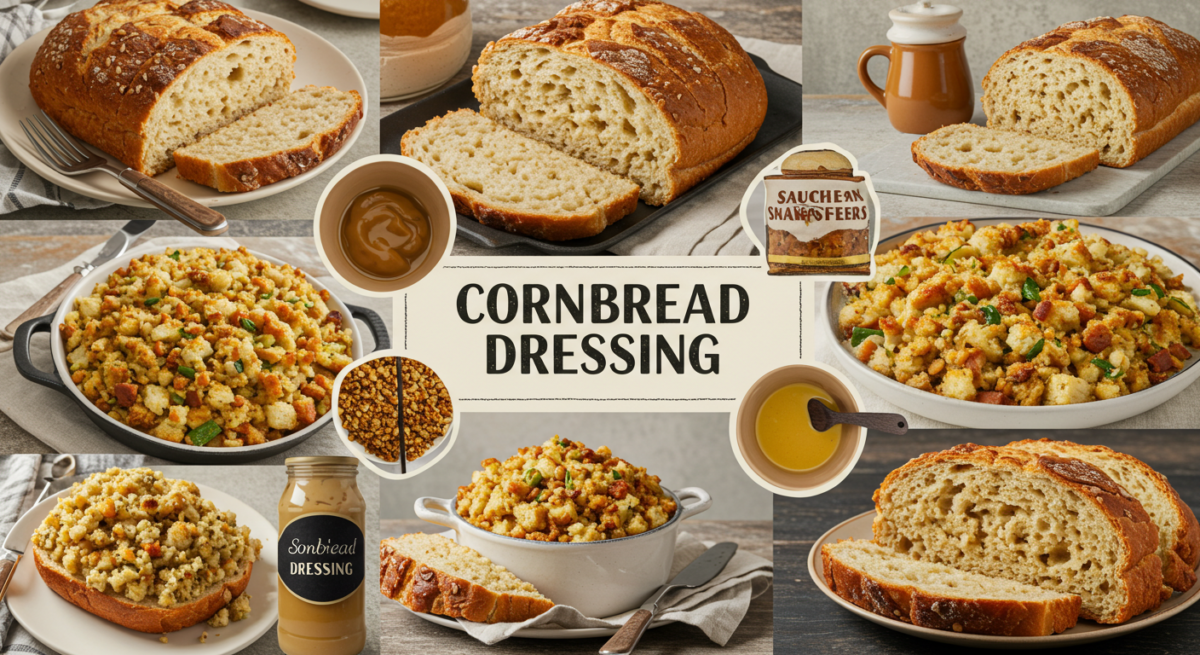There is something uniquely comforting about a warm, homemade bowl of soup. It evokes memories of cozy family dinners and the soothing feeling of being wrapped in a blanket on a chilly day. When that soup also brings together hearty ingredients like chicken and noodles, alongside the nutritious punch of brussel sprouts, you have a winning combination that can satisfy both your hunger and your health goals. In this article, we will talk all about brussel sprouts chicken noodle soup, explaining how to prepare it, why brussel sprouts are such an underrated vegetable, and how you can adapt this recipe to fit any lifestyle.
If you have never tried it, brussel sprouts chicken noodle soup might seem like an unexpected twist on a familiar dish. However, once you enjoy the marriage of flavors and textures, you may find yourself returning to this recipe time and time again. Think of tender, juicy chicken simmering in a savory broth with noodles that absorb all the mouthwatering flavors. Then add brussel sprouts that offer a slightly crunchy, pleasantly bitter note, which contrasts perfectly with the mild sweetness of carrots, the comforting aroma of onions, and the subtle zing from herbs and spices.
Throughout this article, we will delve into every detail that will help you craft a perfect pot of brussel sprouts chicken noodle soup. We will explore the health benefits of each ingredient, share tips and tricks for cooking brussel sprouts so they maintain an appealing texture, and reveal the steps you need to follow for a soup that feels fancy but remains straightforward enough to whip up any day of the week. Above all, we aim to give you the knowledge and inspiration to surpass other generic soup recipes, making yours truly stand out.
2. The Unassuming Superstar: Why Brussel Sprouts Deserve More Love
Before focusing on the soup itself, let’s highlight the star of the show: the brussel sprout. You might be thinking, “Really? Brussel sprouts?” Many of us have memories of being served overcooked, mushy brussel sprouts that left a bitter taste on the palate. Yet, when cooked properly, these little green gems become tender on the inside, with a slightly crisp exterior and a gentle, nutty flavor.
Brussel sprouts belong to the cruciferous vegetable family, which also includes broccoli, cabbage, and kale. They are packed with essential vitamins, like vitamin C and vitamin K, and they are also high in fiber. Their unique taste is best appreciated when they are either roasted, sautéed, or incorporated into soups, allowing them to soften and sweeten without becoming limp or sulfurous. Additionally, brussel sprouts serve as an excellent way to add color and variety to your meals.
In brussel sprouts chicken noodle soup, these vibrant sprouts lighten up the broth, creating an unexpected yet welcome blend of flavors. Because brussel sprouts hold their shape better than many other vegetables, they are less likely to disintegrate. Instead, they offer a subtle crunch and a fresh note that balances out the heavier components, like the noodles and chicken.
3. Nutritional Benefits of Brussel Sprouts and Chicken
One of the primary reasons that brussel sprouts chicken noodle soup stands out is due to its robust nutritional profile. Indeed, each part of this soup brings something vital to the table. Let’s look at the brussel sprouts and the chicken first, as they are the foundation of this dish:
- Brussel Sprouts:
- High in Vitamin C: Helps support your immune system and collagen formation.
- Rich in Fiber: Aids digestion and can help maintain a healthy gut.
- Vitamin K: Supports bone health and proper blood clotting.
- Antioxidants: May reduce inflammation and protect cells from oxidative stress.
- Chicken:
- Lean Protein: Excellent for muscle building and repair.
- B Vitamins: Aid in energy production.
- Essential Amino Acids: Helps support various bodily functions, including metabolism and tissue repair.
When these main ingredients join forces in your soup, you get a meal that is both delicious and nourishing. The protein from the chicken complements the fiber and vitamins from the sprouts. Adding noodles for carbohydrates rounds out the macronutrient profile, making the soup more satisfying. Meanwhile, carrots, celery, onions, and garlic can further elevate the health benefits and taste.
4. Essential Ingredients That Bring This Soup to Life
For any soup recipe, the ingredients play a significant role in determining flavor, texture, and overall appeal. The beauty of brussel sprouts chicken noodle soup lies in its simplicity. While you can certainly embellish the recipe with exotic spices or unusual garnishes, the fundamental components listed here will give you a satisfying bowl every time:
- Chicken Pieces: You can use breast for a leaner option or thighs for juicier results.
- Brussel Sprouts: Look for sprouts that are firm and bright green. Avoid any that are discolored or smell overly strong.
- Onions and Garlic: A base for almost any savory dish, these aromatics add depth and warmth to your soup.
- Carrots and Celery: Classic vegetables that bring sweetness and a hint of saltiness. They also contribute to the underlying broth flavor.
- Noodles: Traditional egg noodles, whole wheat noodles, or even gluten-free varieties can work here.
- Chicken Broth: Ideally homemade or low-sodium store-bought to control the salt content.
- Herbs and Spices: Consider thyme, rosemary, bay leaves, parsley, black pepper, and a bit of salt. Adjust these to your personal preference.
In essence, you want balance. The mildness of the chicken is enhanced by the slight pungency of onions and the mellow sweetness of carrots. The brussel sprouts bring a distinct layer of flavor that sets this soup apart from typical chicken noodle soups. Finally, the noodles offer a comforting, hearty element that soaks up the tasty broth.
5. Step-by-Step Cooking Instructions for Brussel Sprouts Chicken Noodle Soup
Let’s walk through the process of creating brussel sprouts chicken noodle soup. By following these steps, you can feel confident that your soup will turn out both nourishing and incredibly flavorful. The quantities of each ingredient can be adjusted based on your personal preference or dietary needs.

- Sauté the Aromatics
- Heat a tablespoon or two of olive oil in a large stockpot or Dutch oven.
- Add chopped onions and diced celery. Let them cook for a few minutes until they become translucent.
- Toss in minced garlic. Be careful not to let the garlic burn, as it can turn bitter quickly.
- Brown the Chicken
- Push the vegetables to one side of the pot. Add your chicken pieces, allowing them to develop a slight golden color on the exterior. Browning adds another dimension of flavor to the soup.
- Season with a pinch of salt, black pepper, and any preferred herbs.
- Add Broth and Simmer
- Pour in enough chicken broth to cover the chicken and vegetables, then stir gently to mix.
- Bring the broth to a simmer, not a rolling boil. Cover the pot and let everything cook for about 15–20 minutes so the chicken can become tender and the flavors can meld.
- Incorporate Brussel Sprouts
- While the broth is simmering, rinse the brussel sprouts well. Trim the ends and remove any discolored outer leaves. Slice them in half, especially if they are larger sprouts.
- Add the brussel sprouts to the pot and allow them to simmer for another 10–12 minutes. This step ensures they soften without overcooking.
- Cook the Noodles
- About 5–7 minutes before you expect the soup to finish, add your noodles. Check the package instructions to see how long they need to cook.
- Depending on your preference, you might cook the noodles separately in salted water. Then, drain them before adding to the soup. This method prevents them from soaking up too much broth.
- Taste and Adjust Seasonings
- Sample the soup to check if you need more salt, pepper, or herbs. Remember that store-bought broth can be high in sodium, so taste carefully before adding extra salt.
- Serve and Enjoy
- Ladle the soup into bowls. Garnish with fresh parsley or a sprinkle of Parmesan cheese if desired. Enjoy it hot and fresh.
Following these steps guarantees you a pot of brussel sprouts chicken noodle soup that is bursting with flavor, color, and nutritious ingredients.
6. Tips, Tricks, and Kitchen Hacks
Cooking soup may seem straightforward, but a few insider tips can elevate the taste and presentation of brussel sprouts chicken noodle soup:
- Choose Fresh Produce
- Fresher brussel sprouts and chicken translate to a cleaner, brighter taste.
- Use Homemade Stock
- If time permits, prepare your own chicken stock. You can simmer chicken bones with onions, carrots, celery, and herbs for a few hours.
- Don’t Overcook the Sprouts
- Brussels sprouts can quickly lose their appeal if they become too soft. Monitor their texture closely.
- Season Gradually
- Add salt and spices in stages. It’s easier to add more seasoning than to correct an overly salted dish.
- Consider Cooking Noodles Separately
- This prevents the noodles from becoming too soft or soaking up all the broth.
- Taste Frequently
- With each addition, give the soup a quick taste. Adjust seasoning to maintain a balanced flavor profile.
By applying these tips, you’ll consistently produce a soup that is rich in nutrients and utterly delicious. It’s the little things that make a big difference when cooking.
7. Creative Variations of Brussel Sprouts Chicken Noodle Soup
What’s amazing about brussel sprouts chicken noodle soup is how adaptable it can be. If you prefer a creamier texture, you can incorporate a splash of cream or half-and-half near the end of cooking. If you’re watching your calorie intake or are simply trying to reduce carbs, feel free to swap the noodles for spiralized zucchini or other veggie noodles.
- Spicy Kick: Add chili flakes or a dash of hot sauce for a little extra heat.
- Zesty Twist: Squeeze in some fresh lemon juice just before serving. This brightens up the flavors and pairs exceptionally well with chicken.
- Gluten-Free: Opt for gluten-free noodles or even rice. Make sure your broth is also gluten-free, as certain commercial versions might contain traces of wheat.
- Hearty Grains: For a different approach, replace noodles with barley or farro. These grains add a chewy texture and nutty flavor.
- Vegetarian Version: Swap chicken with chickpeas or white beans, and use vegetable broth instead of chicken broth.
As you can see, there’s no limit to how you can personalize this soup. The primary constant remains the brussel sprouts, which lend a distinctive nuance that sets this recipe apart from other chicken noodle soups.
8. Why Brussel Sprouts Chicken Noodle Soup Outshines Traditional Recipes
Most of us have probably grown up on classic chicken noodle soup. It’s undeniably comforting. Yet, brussel sprouts chicken noodle soup offers an extra layer of both flavor and nutrition. By introducing brussel sprouts, you incorporate another hearty vegetable that supplies vitamins, minerals, and fiber. Additionally, it adds variety to your diet, preventing culinary boredom.
Further, brussel sprouts deliver a unique taste profile that balances the rich, savory elements of the broth. When combined with fragrant herbs like thyme, rosemary, or bay leaves, the soup becomes multidimensional. It’s not merely noodles and chicken floating around in a salty broth. Instead, you have a lively palette of flavors and textures.
Moreover, serving this soup to friends or family often sparks conversation. Brussel sprouts have a reputation for being polarizing. People either love them or hold onto past experiences of them being mushy. But once they taste them in a well-crafted soup, they might realize brussel sprouts deserve a place in their regular meal rotation. In many cases, the unique spin on a household classic can win over even the most hesitant eaters.
9. Common Mistakes to Avoid When Making This Soup
Though brussel sprouts chicken noodle soup is generally straightforward, there are a few missteps that can compromise its quality:
- Boiling Instead of Simmering
- A rolling boil can dry out your chicken and overcook the brussel sprouts. Stick to a gentle simmer.
- Adding the Sprouts Too Early
- If brussel sprouts spend too long in hot liquid, they can become mushy and lose their vibrant color. Add them in the final stages of cooking.
- Overseasoning at the Start
- Tastes evolve as the ingredients meld. Start with moderate seasoning and add more if necessary.
- Ignoring Noodle Guidelines
- Some noodles cook faster than others. Follow package instructions or test their texture frequently so they don’t turn to mush.
- Storing Improperly
- If you plan to store leftovers, cool the soup to room temperature first. Place it in airtight containers and refrigerate promptly. This approach preserves freshness.
By keeping these potential pitfalls in mind, you can maintain the flavor and integrity of your soup. The difference between a lackluster outcome and a perfectly balanced bowl often lies in these small details.
10. Serving Suggestions and Garnish Ideas
Sometimes, the simplest finishing touches can elevate a soup from good to outstanding. When serving brussel sprouts chicken noodle soup, consider these garnish and side ideas:
- Fresh Herbs: A sprinkle of chopped parsley, dill, or cilantro can introduce a pop of color and freshness.
- Toasted Bread or Crackers: A slice of crusty bread or a handful of your favorite crackers can add crunch.
- Cheese: If you’re a fan of dairy, grated Parmesan, cheddar, or a dollop of ricotta can make the soup more indulgent.
- Lemon Zest: A bit of freshly grated lemon zest can brighten the overall flavor, particularly if you’ve included carrots and onions.
- Croutons: Homemade croutons seasoned with garlic and herbs can add texture and extra flavor.
Moreover, pairing this soup with a simple side salad can turn it into a complete meal. The crispness of lettuce and fresh vegetables contrasts with the warm, savory broth, creating a dining experience that feels both healthy and satisfying.
11. Storage and Reheating: Ensuring Your Soup Stays Delicious
One of the best things about soup is how well it keeps, making it convenient for meal prep or batch cooking. If you find yourself with leftover brussel sprouts chicken noodle soup, you’ll be glad to know it usually tastes even better the next day. Here are a few pointers for storing and reheating:
- Cool Before Storing: Allow your soup to cool down slightly before transferring it to airtight containers. This approach minimizes condensation and extends freshness.
- Refrigeration: You can store your soup in the fridge for up to three or four days, but always trust your nose and eyes. If something seems off, it’s better to be safe than sorry.
- Freezing: Brussel sprouts can become softer once frozen, but the soup still freezes fairly well. Use freezer-safe containers and leave a bit of headspace for the liquid to expand.
- Thaw Properly: Defrost your soup in the fridge overnight or use the defrost function on your microwave if you’re pressed for time.
- Reheat Gently: Warm the soup on the stovetop or in the microwave, stirring occasionally. Try to avoid boiling it vigorously since that can break down the veggies more quickly.
Through proper storage, you can ensure that every spoonful of brussel sprouts chicken noodle soup tastes nearly as good as when it was first made.

12. Frequently Asked Questions (FAQs) About Brussel Sprouts Chicken Noodle Soup
To help you get even more comfortable with this recipe, here are answers to some commonly asked questions about brussel sprouts chicken noodle soup and brussel sprouts in general.
Q1: Can I Make This Soup in a Slow Cooker?
Absolutely. To do this, sauté your onions, garlic, and chicken first. Then transfer them to your slow cooker along with your broth, carrots, celery, and herbs. Cook on low for about 6 hours or on high for around 3 hours. Add the brussel sprouts and noodles in the last 30 minutes to prevent them from overcooking.
Q2: What If I Don’t Like the Bitter Taste of Brussel Sprouts?
Often, the bitterness people associate with brussel sprouts comes from improper cooking methods or using older sprouts. Make sure your sprouts are fresh, and try roasting or lightly sautéing them before adding them to the soup. This method helps sweeten their flavor. Also, seasoning them well with salt can counterbalance any residual bitterness.
Q3: Should I Marinate the Chicken Before Cooking?
You can, but it’s not necessary. The soup’s broth and vegetables bring plenty of flavor on their own. If you decide to marinate the chicken, use simple elements like a bit of olive oil, garlic, salt, and pepper to complement the soup’s taste.
Q4: Can I Use Leftover Roast Chicken Instead of Raw Chicken?
Yes, leftover roast chicken can be an excellent addition. Just shred or chop it into bite-sized pieces. You can add it during the simmering stage, reducing the cooking time since the chicken is already cooked. This approach is an economical and time-saving solution.
Q5: How Do I Prevent the Noodles from Getting Soggy?
If you notice your noodles becoming soggy, cook them separately in a pot of boiling water. Drain them and then add them to individual bowls, pouring the hot soup over the noodles. This method ensures they remain firm.
Q6: Are Frozen Brussel Sprouts Acceptable?
While fresh sprouts offer the best texture, you can use frozen brussel sprouts in a pinch. Just be aware that they may become softer more quickly. Adjust the cooking time accordingly, and add them closer to the end of the simmering process.
Q7: Can I Skip the Noodles Entirely?
Absolutely. If you want a lighter or low-carb soup, omit the noodles. You can add extra vegetables, such as zucchini, mushrooms, or spinach, to maintain a hearty feeling without using pasta.
Q8: What Type of Noodles Work Best?
Traditional egg noodles are a common choice, but you can experiment with any pasta you like. Some people enjoy using whole wheat noodles for added fiber, while others may opt for gluten-free varieties. Pick the style that suits your taste buds and dietary requirements.
Q9: Is This Soup Suitable for Meal Prep?
Yes. Brussel sprouts chicken noodle soup is great for meal prep. Store individual portions in containers so that you can quickly grab one for lunch or dinner during the week. If you plan on storing it for several days, consider undercooking the noodles slightly to maintain their texture when you reheat.
Q10: Can I Add Dairy to Make It Creamy?
You can stir in heavy cream, half-and-half, or even coconut milk toward the end for a creamier version. This addition changes the soup’s flavor profile, so be sure to taste and adjust your seasonings after adding the dairy.
13. Going Beyond the Ordinary: Elevating Your Recipe Further
If you want to take brussel sprouts chicken noodle soup to the next level, consider experimenting with gourmet finishes and flavor enhancers. For instance, a drizzle of truffle oil can impart an earthy aroma that pairs surprisingly well with the natural sweetness of chicken and carrots. If you have a love for spice, try tossing in a pinch of smoked paprika or a bit of chipotle powder for a smoky heat.
Another fun way to elevate your soup is by turning it into a dumpling soup. You could add homemade dumplings made from flour, baking powder, and a bit of milk. As these dumplings cook, they absorb the savory essence of the broth, transforming a simple soup into a filling stew-like meal. The brussel sprouts still remain a focal point, adding color and a fresh element to counterbalance the rich dumplings.
Don’t hesitate to harness seasonal produce, either. In the fall, you could incorporate butternut squash or sweet potatoes. In the spring, fresh peas or asparagus tips might provide a delightful contrast to the brussel sprouts. The key is to remain open-minded. By doing so, you ensure your soup changes with the seasons and never grows stale.
14. Brussel Sprouts Chicken Noodle Soup for Special Diets
It’s easy to adapt brussel sprouts chicken noodle soup for those following specific diets. The soup already leans toward being healthy and nutritious, but you can modify it further:
- Keto or Low-Carb: Skip the noodles and load up on extra chicken and brussel sprouts. You can also stir in a bit of cream for added fat if desired.
- Paleo: Omit the noodles and use a paleo-friendly broth (watch out for added sugar or soy). Amp up the vegetables, like mushrooms, spinach, or kale.
- Whole30: Use compliant chicken broth and ensure none of your seasonings or sauces contain off-limits ingredients. Keep it to whole foods, focusing on proteins and veggies.
- Vegan or Vegetarian: Swap chicken with tofu, tempeh, or beans, and use vegetable broth. You’ll still get plenty of protein, fiber, and vitamins.
By making these small, mindful changes, you can turn this soup into a personalized masterpiece that meets your nutritional goals while preserving the core flavors that make it special.
15. Final Thoughts: Conclusion
All in all, brussel sprouts chicken noodle soup captures the essence of comfort food while introducing a fresh, nourishing twist that easily elevates it above standard chicken noodle offerings. The brussel sprouts themselves bring vibrant color, subtle crunch, and an array of vitamins that enhance the soup’s overall health benefits. Meanwhile, tender chicken and noodles provide a satisfying base, made even more flavorful by simple yet effective seasonings and herbs.
This soup also grants tremendous flexibility. Whether you’re cooking for a family with varied tastes, focusing on healthy meal prep, or experimenting with dietary preferences, brussel sprouts chicken noodle soup can adapt to your needs. You can keep things classic with just the basics, or get creative by adding unique spices, extra vegetables, or finishing touches like cream or cheese. Regardless of how you approach it, the end result will likely be a nutritious bowl that showcases brussel sprouts in an unexpected yet delightful way. So the next time you find yourself craving a comforting, wholesome meal, remember this recipe. With a few simple steps, you can create a pot of soup that not only warms your body but also excites your palate, making every spoonful a testament to the power of good ingredients, thoughtful preparation, and a little culinary courage.
For more delicious recipes ; Salmon Belly Recipes: Discover Delicious Dishes & Benefits





